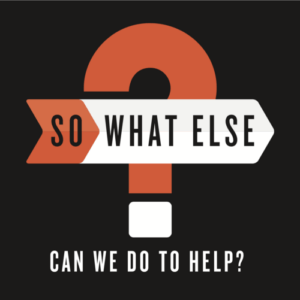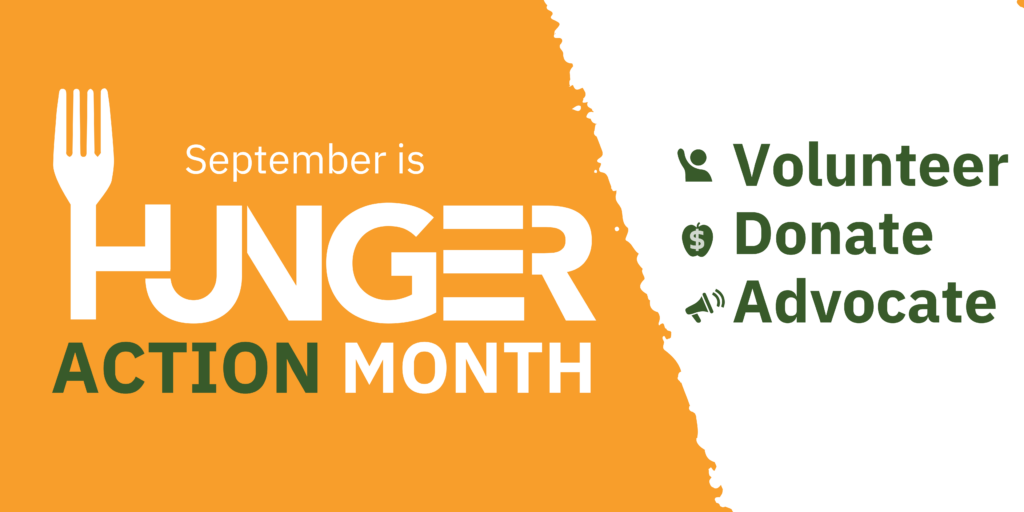How Small Actions Can Make a Big Impact During Hunger Action Month
Hunger Action Month, observed every September, serves as a powerful reminder of the prevalent issue of hunger in our communities and the role each of us can play in combating it. Hunger is a reality for millions, and while the problem may seem insurmountable, even the smallest actions can create ripples of change. At So What Else, we believe in the collective power of individuals to make a significant difference. Here’s how you can contribute this Hunger Action Month and beyond.
Understanding Hunger: The Bigger Picture
To address hunger effectively, it’s essential to understand its scope and impact:
Global Hunger Crisis
The issue of hunger isn’t confined to one region or country; it’s a global crisis. According to the United Nations, around 828 million people globally go to bed hungry every night. This staggering statistic highlights the extent of the problem, as millions of individuals lack access to sufficient, nutritious food. The global hunger crisis is a complex issue that involves various factors, including conflict, climate change, poverty, and inadequate infrastructure.
Hunger in the U.S.
In the United States alone, over 34 million people, including 9 million children, face food insecurity. Despite being one of the world’s wealthiest nations, millions of Americans struggle to put food on the table due to factors such as rising living costs, unemployment, and the gaps in the social safety net. This food insecurity affects individuals and families across all demographics, and unfortunately, children bear a significant portion of this burden. Children facing hunger are more likely to suffer from developmental delays, poor academic performance, and long-term health issues.
Ripple Effects of Hunger:
Hunger is far from just a matter of an empty stomach; it has a profound impact on individuals and entire communities. The consequences of hunger extend beyond immediate physical discomfort. It affects health, education, and even economic stability. Chronic hunger weakens immune systems, making people more susceptible to diseases. It affects children’s ability to concentrate in school, hindering their academic performance and future opportunities. Moreover, hunger can perpetuate cycles of poverty, as those who struggle to get enough nutrition often face difficulties in maintaining steady employment and productivity.
Hunger Action Month is a time to shed light on these issues and mobilize communities to take action. It is not just about understanding the problem but recognizing that each of us has the potential to contribute to solutions.
Small Actions That Make a Big Impact
Every effort counts when it comes to alleviating hunger. Here are small yet meaningful actions you can take this month:
- Donate Food
One of the simplest yet most effective ways to help is by donating food to those in need. Food banks, pantries, and other hunger-relief organizations rely on the generosity of individuals and communities to provide sustenance for those facing food insecurity. Organizing a food drive in your neighborhood, workplace, or school can help collect non-perishable items like canned goods, rice, pasta, peanut butter, and canned vegetables. If you aren’t able to organize a full-scale drive, consider making a direct donation to a local food bank. Reach out to organizations like So What Else to find out about specific needs, as many may have particular items they are urgently in need of. Your donations could make a significant difference in someone’s life. - Volunteer Your Time
Another impactful way to help during Hunger Action Month is by donating your time. Volunteer at a food pantry or soup kitchen to serve meals or assist in food sorting and packing. Many organizations also need help organizing food distributions or community meal programs. Volunteering is a way to directly engage with your community, making a tangible impact by ensuring that food reaches the people who need it most. If you are unsure where to volunteer, check with local charities or visit their websites for information on how to get involved. - Raise Awareness
Raising awareness about hunger issues is a powerful tool for inspiring change. Use your social media platforms to share statistics, stories, and information about food insecurity. By simply posting on Facebook, Instagram, or Twitter, you can help educate your network and encourage them to take action as well. You can also use hashtags such as #HungerActionMonth, #EndHunger, and #SmallActionsBigImpact to increase the visibility of your message. Encouraging friends and family to get involved by volunteering, donating, or spreading awareness can amplify the efforts to fight hunger in your community. - Fundraise for the Cause
In addition to giving time or food, fundraising is another effective way to combat hunger. Organize charity events such as bake sales, charity runs, or crowdfunding campaigns to raise money for hunger-relief organizations. Financial contributions help these organizations purchase essential food items, provide resources for community programs, and expand their outreach. Setting up recurring donations or encouraging your employer to match donations can provide ongoing support to these important causes. Every dollar raised can contribute to feeding families and providing vital nutrition to those in need. - Advocate for Change
Advocating for systemic change is crucial in addressing the root causes of hunger. Write to your local representatives urging them to support policies that help fight food insecurity. This could include advocating for food assistance programs like SNAP (Supplemental Nutrition Assistance Program) or supporting local school meal initiatives. You can also sign petitions that promote hunger-relief initiatives, such as increasing funding for food programs or improving access to nutritious meals for low-income families. Stay informed about legislative actions affecting food insecurity and engage with others in your community to push for policy changes that can make a lasting impact.
How So What Else Is Making a Difference
At So What Else, our mission revolves around creating a supportive community for individuals and families in need. Here’s how we’re contributing during Hunger Action Month:
Community Meal Programs
We understand that providing nutritious meals is one of the most direct ways to combat hunger. That’s why we host weekly meal distributions in underserved areas. These programs not only provide food but also create a sense of community, helping to strengthen the bonds between neighbors. Our meals are designed to meet the nutritional needs of families, ensuring that those who rely on our services receive wholesome, balanced food.
Food Rescue Initiatives
Food waste is another significant issue that exacerbates hunger. Partnering with local businesses, we are able to rescue surplus food that would otherwise go to waste and redistribute it to families in need. This initiative not only helps provide food to those struggling with hunger but also raises awareness about the importance of reducing food waste.
Youth Engagement
Empowering the next generation to take action is key to building a sustainable movement. Through educational programs, we engage young volunteers, teaching them about food security and encouraging them to participate in hunger-relief efforts. These young advocates are the future of the fight against hunger, and we are proud to be part of their journey toward making a difference.
Your support enables us to expand our reach and impact. Together, we can create a future where no one goes hungry.
Success Stories: Small Actions, Big Changes
Sometimes, all it takes is one small act of kindness to change lives. Here are a few stories of individuals who made a big difference:
The Power of One Meal
A high school student organized a bake sale, raising $1,500 to support local food banks. This simple gesture made a huge impact, funding dozens of meals for families in need. It’s a testament to how one person’s initiative can lead to a ripple effect of generosity.
Volunteering as a Family
A family of four spent their weekends volunteering at their local food pantry, helping to pack and distribute meals. Their consistent effort not only made a direct impact but also inspired others in their neighborhood to get involved. Volunteering together brought the family closer while giving back to the community.
Social Media Advocacy
A single Instagram post by a local influencer led to an influx of donations to a community pantry. This highlights the power of social media to mobilize people quickly and effectively. When we use our platforms to raise awareness, we can inspire others to take action and make a difference.
These stories prove that anyone can be a catalyst for change. Every small action adds up, and collectively, we can create a significant impact.
Creative Ways to Engage This Hunger Action Month
Looking for unique ways to contribute? Here are some creative ideas:
Cook-Off for a Cause
Host a cooking competition with friends, family, or colleagues, and donate the proceeds to hunger-relief organizations. Not only will you be feeding people in need, but you’ll also be fostering a sense of community and friendly competition.
Art for Awareness
Create and sell art pieces with proceeds benefiting food security programs. This could include anything from paintings to photography or even digital art. Not only does this raise money for a good cause, but it also helps raise awareness about hunger and food insecurity.
Virtual Challenges
Organize online challenges, like “Skip a Meal and Donate,” to highlight the reality of hunger. Participants can share their experiences and encourage others to donate or get involved in hunger-relief efforts. Virtual challenges have the power to spread across social media, reaching a large number of people quickly.
The Ripple Effect of Your Actions
When you take action, the impact goes beyond immediate hunger relief:
Strengthening Communities
Providing food fosters connections and resilience within communities. When people come together to help others, it strengthens the bonds that hold communities together, creating a network of support that can withstand future challenges.
Improving Health Outcomes
Nutritious meals reduce the risk of chronic diseases and improve overall well-being. People who have access to balanced, healthy food are more likely to lead productive lives and contribute positively to their communities.
Breaking the Cycle of Poverty
Hunger relief initiatives enable individuals to focus on education and employment rather than worrying about their next meal. By addressing food insecurity, we give people the stability they need to break free from the cycle of poverty and build better futures for themselves and their families.
Take Action Today
You don’t have to wait for the perfect moment to make a difference. Here’s how you can get started right away:
- Visit the So What Else website to learn about our programs and volunteer opportunities.
- Make a donation to support our hunger-relief efforts.
- Spread the word about Hunger Action Month in your community.
Together, we can create a world where no one has to wonder where their next meal will come from.
Conclusion
Hunger Action Month is a powerful reminder that change starts with each of us. Whether you donate, volunteer, advocate, or simply share a message, your actions matter. At So What Else, we’re committed to fighting hunger and empowering communities—and we can’t do it without you. This September, let’s unite in the fight against hunger and prove that small actions truly can lead to big impacts.







